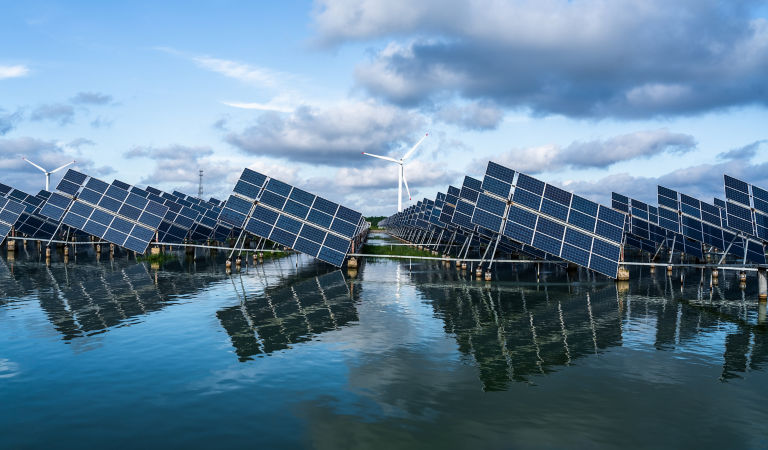A promising outlook for renewables?
Applying a capital-cycles approach allows us to isolate potential sub-themes that may be overlooked or experiencing underinvestment. For instance, our research has uncovered promising potential in the renewables supply chain as well as among utilities. Energy storage systems, which enhance grid stability by smoothing out fluctuations in renewable energy generation, may be another area of interest.
Some companies in the renewables space are suffering from depressed valuations, but in our view, this can be a strong set-up for future return potential. Back in 2020, capital flooded into this area, driven by momentum behind ESG and aspirational decarbonisation goals by companies and governments. For example, 370 companies joined the Science Based Targets initiative (SBTi) between November 2019 and October 2020, at an average rate of 31 companies a month — more than double the average rate from 2015 to 20192.
However, this period of investment was followed by 2022’s spike in commodity prices, concerns around energy security, and structurally higher rates and inflation. This led to funding bottlenecks for renewable projects and accordingly, we saw increased use of traditional energy sources. But with inflation moderating and global central banks signalling rate cuts ahead, we believe that a potentially more accommodative funding environment could support renewable project pipelines.
The utilities opportunity
Utilities are another strong area of interest for us. As enablers of the transition, we view utilities as positioned to benefit from numerous secular tailwinds in place for decades to come. This includes the electrification of power, greening of generation, electrical grids and network upgrades, which will drive capex not just for generation, but for the expansion and modernisation of transmission and distribution systems.
After a period of low, and in some cases no, demand growth, we view utilities as beneficiaries of increasing demand from electrification. Decarbonisation of the power generation fleet, for example, provides utilities with opportunities to grow their rate base and earnings.
While we see promising opportunities within renewable energy technologies, especially where we see a capex investment gap, we believe keeping a balanced view is key. Investors should remember that traditional energy companies are likely to continue to play a role in the global energy mix for the foreseeable future and renewables are more likely to offset incremental additional demand rather than displace existing power generation in the short to medium term. An active engagement-driven approach, coupled with strong ESG research integration, can help to inform actions issuers are taking to decarbonise in order to meet energy demand in a responsible manner.
Bottom line
As with any investment theme, there are risks to our outlook, such as government policy. We track and constantly evaluate this within our thematic research and framework. Idiosyncratic risk arises from our bottom-up investments, driving our pursuit of companies with a culture of good governance and operational excellence. Looking ahead, we believe that the opportunity within the energy transition is significant, and that long-term-orientated investors can potentially benefit from the disruption and structural change that is poised to transform the industry.

















Trends and transformation distilled: Our 2024 outlook in brief
Our experts explore investment opportunities and risks for the year ahead.
Multiple authors